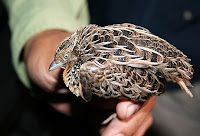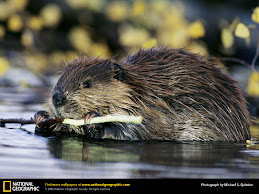
Found this essay circulating on the web, and wanted to share it with you.
By Joan Reinhardt Reiss
…If each American family bought a roll of recycled toilet paper just once, 400,000 trees could be saved.
In the 1990s, as the California Director for the Wilderness Society, I spent many days fighting for forests. But I never worried about toilet paper, and that was a mistake. Thanks to multimillion dollar advertising campaigns by paper giants like Kimberly-Clark, Americans demand the softest toilet paper possible. The company Quilted Northern has even introduced three-ply “Ultra Plush” toilet paper, as though two-ply weren’t thick enough. But that super-soft toilet paper comes from cutting real trees and is causing major deforestation.
Welcome to the toilet paper wars. According to the Natural Resources Defense Council (NRDC), deforestation is the single greatest cause of global warming, and toilet tissue is responsible for 15% of all deforestation. Loss of trees results in enormous devastation to entire forest ecosystems. NRDC estimates that on a worldwide basis, deforestation causes more global warming than the combined emissions of all vehicles, airplanes and ships—and that’s not all. When trees become paper, more water is required than converting recycled paper to fiber. Many companies that use tree pulp also employ chlorine-based bleach, which pollutes water systems.
The U.S. is the largest consumer of toilet paper in the world, yet only 2% of our toilet paper purchases are from recycled fibers, according to Information Resources Incorporated, a marketing research firm. Consider the San Francisco Bay Area, a green epicenter where high use of recycled toilet paper might be expected. Annual sales figures show that only 1% of Bay Area toilet tissue is recycled. In Europe and Latin America, recycled materials constitute about 20% of all toilet tissue sales. Shame on us!
NRDC is consulting with some trend-setting clients like Major League Baseball to use only recycled toilet tissue. During the Academy Awards ceremony we were all dazzled by the gowns, jewels and sparkle from the star power. Few knew that all the toilet paper in the Kodak Theater restrooms was 100% recycled.
Companies like Georgia Pacific and Kimberly-Clark promote the softness of their tree-based toilet tissue. But other comparably priced, eco-friendly choices exist. Seventh Generation, a Vermont-based company, makes a host of environmentally responsible products including recycled toilet paper. Marcal Paper Products LLC launched their own 100% recycled content Small Steps line in early April, handing out free rolls of toilet paper from an “urban jungle” set up in New York City’s Times Square. The company’s message at a following press conference was that changing paper product purchases was one of the easiest ways consumers could make a conscious environmental choice—and one with a big impact. As signs in the urban jungle announced, it takes three and a half tons of raw fiber to make two tons of toilet paper. They equated everyone purchasing one roll of Marcal Small Steps paper towels to saving one million trees. “The government’s not going to save the environment," said Marcal CEO Tim Spring."[How someone spends their] fifty dollars a week [in grocery money] is going to save the environment.”
As the major players in this environmental monopoly game, we can make change by talking with our wallets. When sales of all recycled paper products start to take off, every company will want a piece of the action. Shopping for environmentally sound paper products is simple. Look for paper goods that are 100% recycled with a high percentage of post-consumer content—a reference to the waste paper that we place in our recycle bins. The best paper products, Marcal’s for instance, state that no chlorine bleaches were used in the manufacturing process. Chlorinated chemicals are toxic and cause pollution of water systems. Hydrogen peroxide is one of the best products to bleach paper because this chemical breaks down to water and oxygen.
If you doubt your toilet paper and other paper goods, consult the Greenpeace website, which grades a host of recycled items. Check out their printable Recycled Tissue and Toilet Paper Guide . Greenpeace calculates that if each American family bought a roll of recycled toilet paper just once, 400,000 trees could be saved. Recycled toilet tissue even costs about the same as rolls that destroy the forest. Surely a slight decrease in toilet tissue softness is worth saving forests, decreasing global warming and leaving our children a better planet.
 What to make of the upcoming climate conference in Copenhagen?
What to make of the upcoming climate conference in Copenhagen?


























